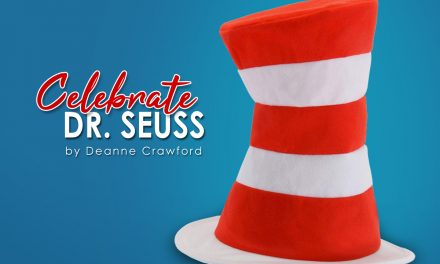Have you ever wondered…
What was the first puzzle ever invented?
Is there really an impossible puzzle?
Can I be a professional puzzler when I grow up?
As the winter doldrums settle in this month, National Puzzle Day, on January 29th is the perfect time to liven up your day with a celebration!
Do you have a favorite puzzle? Encourage children to share what they like (or don’t like) about puzzles. When you heard the word “puzzle”, did you think of the most common type of puzzle, the jigsaw. Or are you more of a Sudoku or Crossword puzzler? While jigsaw puzzles categories are the most widely sold, they are not the only puzzle enjoyed by puzzlers. Other types or categories include dissection puzzles like Tangrams, logic puzzles like Sudoku, word puzzles, mechanical puzzles like the Rubik’s Cube (check out this unit study!), and others. Depending on your personality type or past experiences, you may love one type of puzzle and simply detest the other. Or you may love them all! Just for fun, older children and parents can take a short personality quiz and read this Psychology Today post about personality types and puzzles. If your personality and puzzles fit together perfectly, consider a degree in enigmatology, or the study of puzzles! You will be required to design your own major, this rare degree is held by only one person, Will Shortz, crossword editor of the New York Times.
According to the Encyclopedia Britannica, the earliest reference to puzzles is the Rhind papyrus, which contained 84 mathematical problems compiled by Ahmes, a scribe around 1650 BCE. Grab a pencil and solve this math puzzle from the Rhind papyrus. Have you ever heard of Archimedes? Known for his many inventions, he is also credited with creating the first known Tangram style puzzle. Archimedes’ Box or the Stomachion puzzle, was a square divided into 14 pieces. Players were challenged to make as many designs as possible. Compare that to today’s Tangrams, which are 7 geometric pieces: 5 triangles in different sizes, a square, and a parallelogram. Learn more about the history of Tangrams and watch A Sage’s Journey, The Story of the Tangrams. If you have a set of tangrams, take turns building various figures and tell or write a short story about your picture.
The first jigsaw puzzles were created by map engravers. Does that surprise you? The plan was to teach children about the world, so they took their master maps and glued them to a piece of wood. The map was then cut into pieces that followed the lines of the countries. Geography Realm introduces the history of the dissected map here. Although considered the first “jigsaw” puzzle, the jigsaw was not invented until 1927, more than a hundred years later. Early dissected puzzles were cut by hand, most likely using a small hand saw, called a marquetry saw, that was used to cut thin pieces of wood to create decorative patterns on furniture. While used for educational purposes, early dissected puzzles were time consuming to make and expensive to purchase. It wasn’t until the early 1900s that puzzles became more popular, with this surge in popularity, Parker Brothers devoted their entire factory to manufacturing jigsaw puzzles in 1909! Read about their essential role in the popularity of puzzles here. Unfortunately, puzzles became less popular during the Great Depression, that is until 1933. There was a two-fold reason for this. Until World War II war broke out, puzzles were still largely made of plywood, that is until it was hard to get and puzzle companies had to switch to cardboard. At first, the cardboard was poor quality, but the cost was much cheaper. Because of the lower cost (25 cents), puzzle makers began to market weekly jigsaw puzzles at newspaper stands. Before long, however, cardboard became hard to get, just like the wood. But, not willing to give up this uptick in sales, puzzle companies searched out alternative materials such as metal and plastic! It was during this period that companies also began to give puzzles away and market them inexpensively at newsstands. Before long, they became wildly popular. Puzzle contests with monetary prizes also became popular during the Depression. Fun fact, the early 1930s was the first time that the finished puzzle image appeared on the puzzle box. Before this time, it was considered cheating to look at the completed image while working the puzzle! In recent years, jigsaw popularity has ebbed and flowed. Until the pandemic in 2020, when sales soared, and manufacturers were not able to keep up with the demand. Post pandemic, puzzle popularity has waned a bit, but still remains a favorite pastime for kids and adults.
Earlier I asked about the impossible puzzle. Have you ever faced a challenging puzzle that you thought was impossible? Was there a specific reason you felt that way? Was it an intricate design? While opinions vary on the most difficult or impossible puzzle, in 1964, the Springbok puzzle company promoted the “world’s most difficult puzzle”, which at the time had only 340 pieces. It has been re-released today, but now with 1000 pieces! Peek at the Jackson Pollock painting, Convergence, the template for this puzzle. Would you be willing to take on this challenge? Not quite ready for this next level challenge, but looking for a bigger challenge? Checkout the Impossibles Puzzles! These 1000 pc borderless puzzles include 5 additional pieces that don’t fit anywhere on the puzzle!
Whether you are a jigsaw puzzler or prefer word and logic puzzles, set aside time today to celebrate this favorite pastime! Just for fun, post your puzzle on social media and tag us here at Rainbow Resource Center. We would love to see what you have accomplished. ~ Deanne





